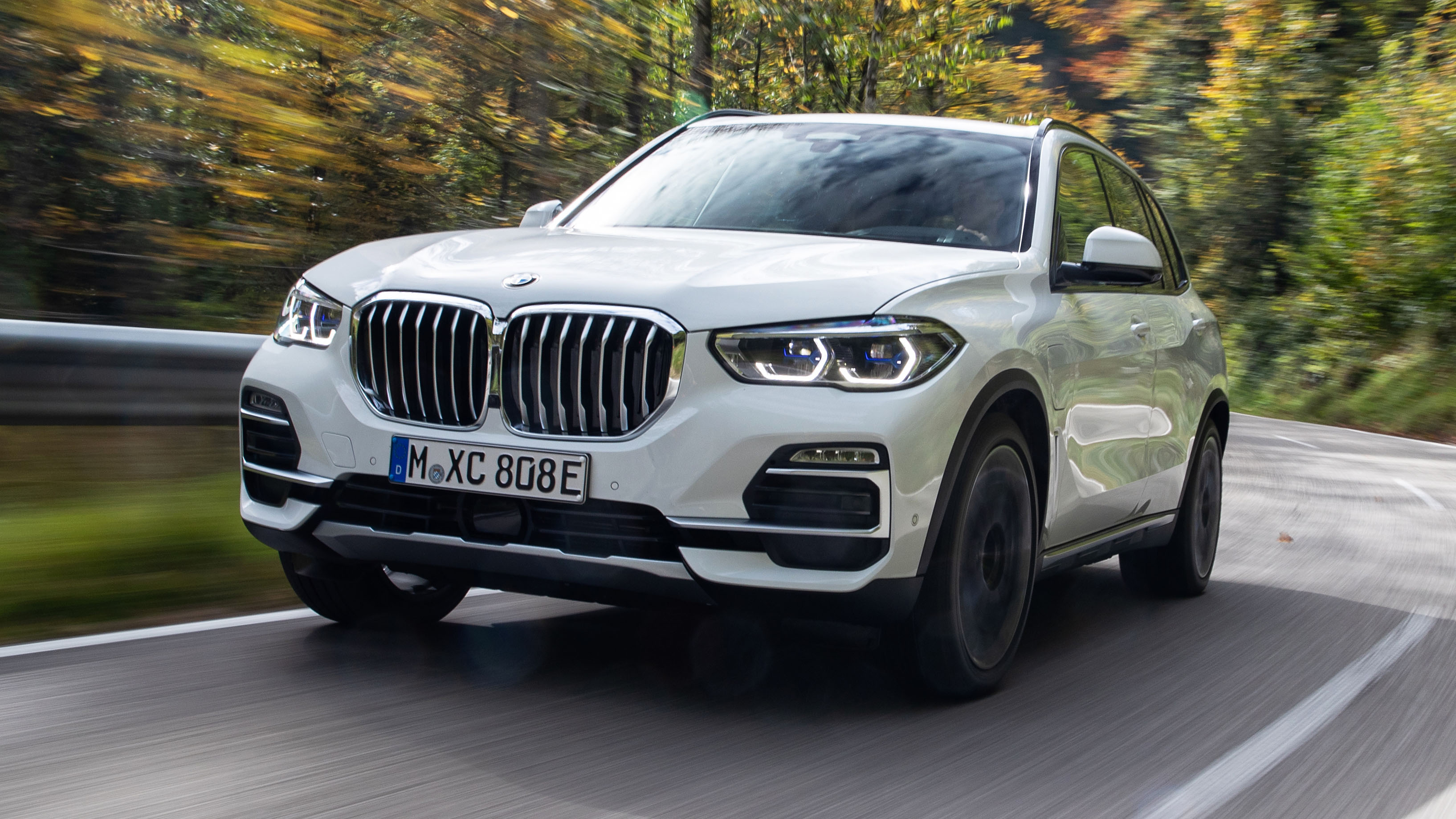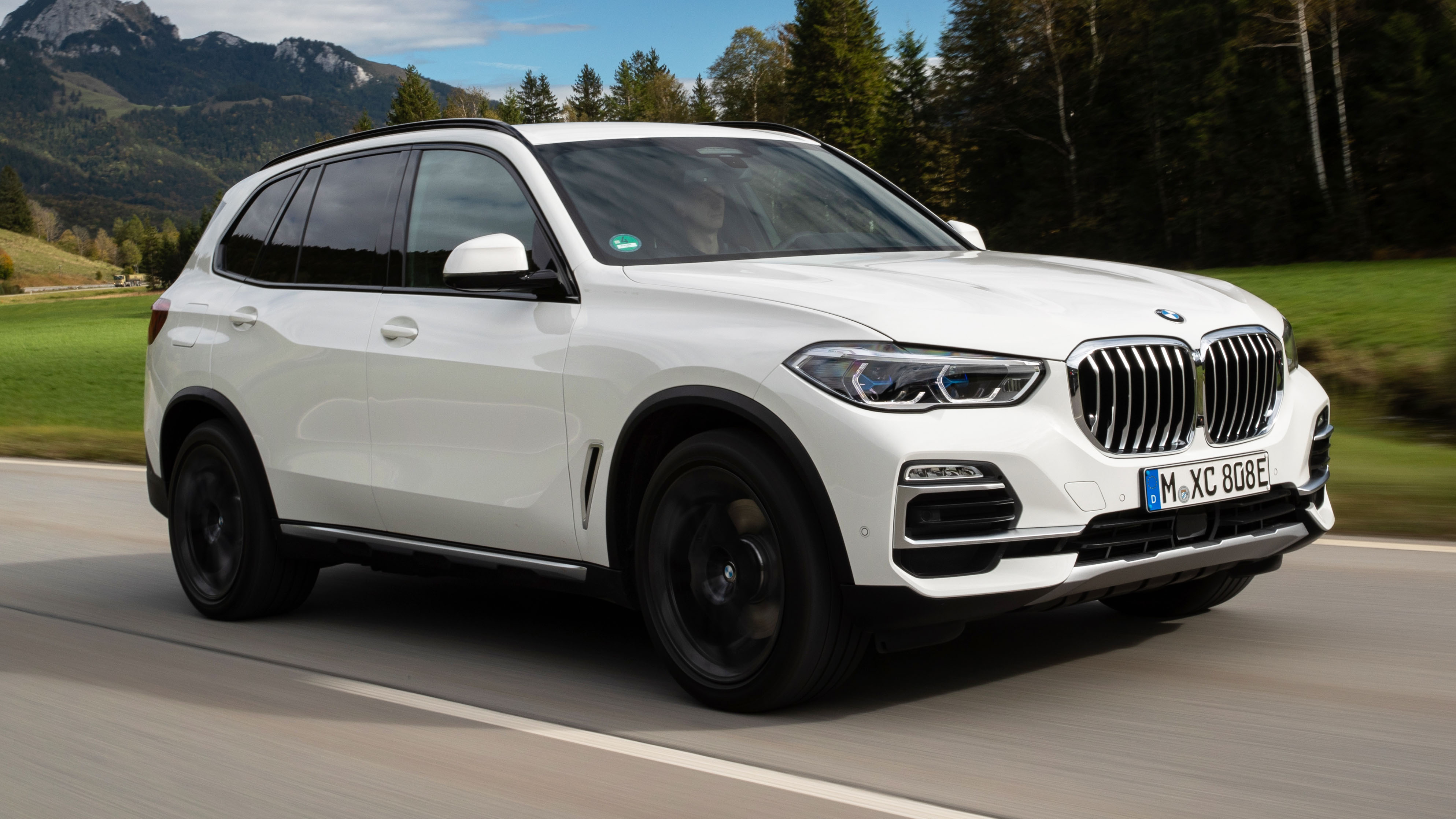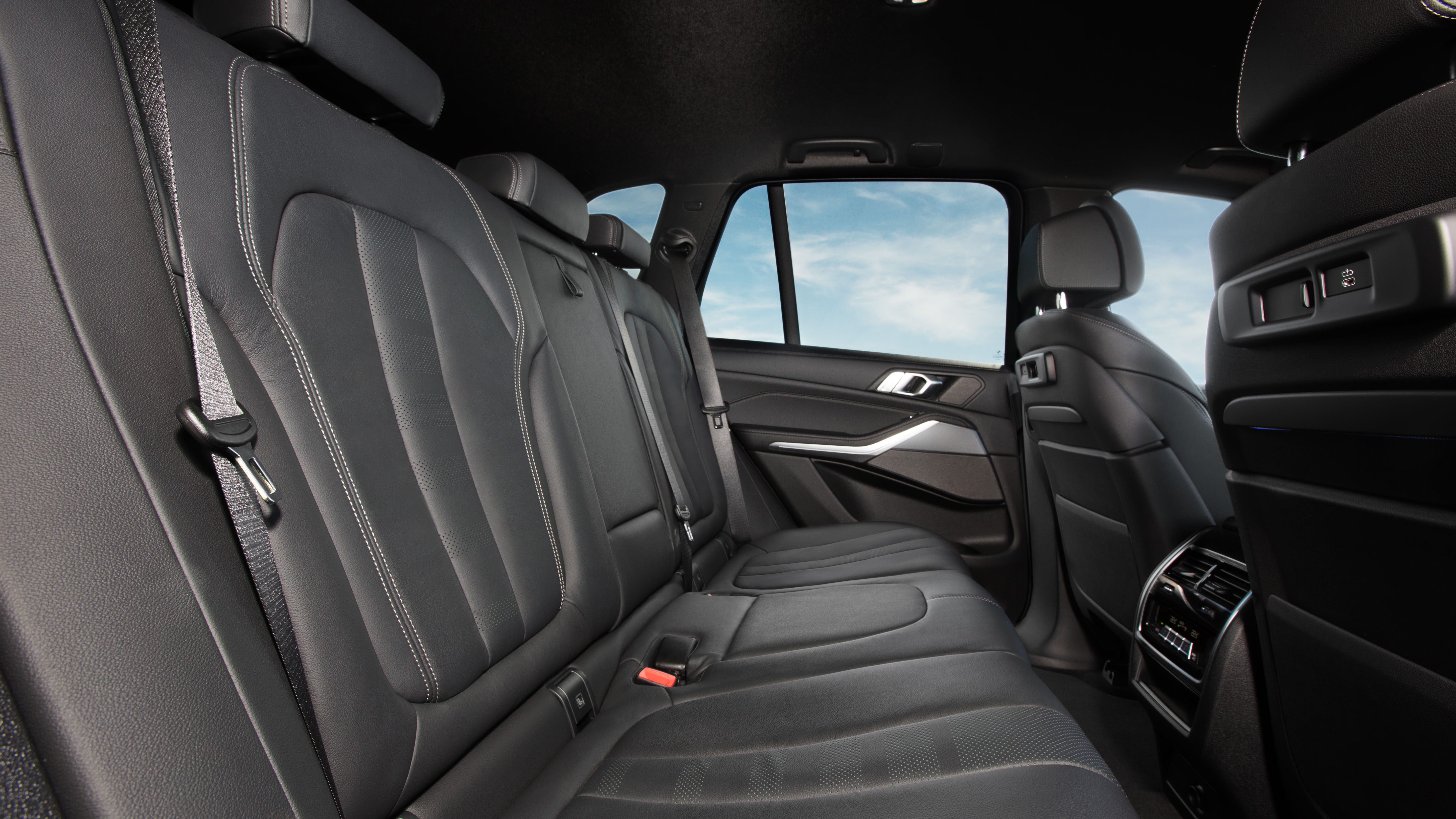
SPEC HIGHLIGHTS
- Battery
Capacity24kWh
- BHP
394bhp
- 0-62
5.6s
- CO2
41g/km
- Max Speed
146Mph
An X5 xDrive 45e? What's that all about?
According to BMW, this plug-in hybrid is the X5 for all your needs. Which is a bold claim.
What they mean by 'all your needs' is it can genuinely reduce your real use of fuel, not just look good in the official figures, because it has a decent electric range.
And it can genuinely do long journeys because they managed to keep a decent size fuel tank. Plus it has a full-fat six-cylinder engine so it serves up enjoyable Munich performance. Finally it has the same cabin and boot space as the normal X5.
That's a pretty good list, because most PHEVs have some or all of a too-small battery, and a too-small tank, and a too-small wheezy downsized engine, and a too-small boot.
How's that work?
As to how it all fitted in without staging a land-grab from the people or the boot, then you've got to assume there's loads of wasted space in the regular X5. Guess that's why it's so bulky.
This 45e plug-in hybrid sandwiches an electric motor between the petrol engine and the autobox. So even when driving in electric mode, it's still all-wheel drive.
The piston engine is a 286bhp petrol 3.0-litre. The e-motor makes 113bhp, the latter enough to still keep up with suburban traffic, but not exactly scoot out of dual-carriageway roundabouts. Mash the throttle to combine those two and you have 394bhp, at which point scooting is very much on.
OK, some eco-numbers please.
Top Gear
Newsletter
Thank you for subscribing to our newsletter. Look out for your regular round-up of news, reviews and offers in your inbox.
Get all the latest news, reviews and exclusives, direct to your inbox.
The battery is 24kWh (which was the same as the first-generation all-electric Nissan Leaf). That's big for a PHEV. It'll take the X5 slightly over 50 miles WLTP – at least if it's not on optional oversize wheels.
As aways with a PHEV I'll give the official consumption and CO2. They're 235mpg, and 39g/km. But as always I'll say they're meaningless – in the real-world it depends on how frequently you plug in, because the grid energy isn't accounted for in the official figures.
Some real-life context. I got about 36mpg on a 100 mile town-and-country trip, including draining the battery. Imagine you did 100 miles commuting, plugged it in every night, you'd get something similar. If you plugged it in at work too you might get away with using no petrol at all during a week's commuting of 50 miles each way.
How does it feel?
It doesn't just drive on electric til the battery's flat, then go to petrol. Few PHEVs do. It uses whatever power source is best for efficiency at any given moment – usually petrol for heavy power, electric for gentler stuff. And of course it can regenerate.
It also takes into account the navigation, so it'll save some battery power if it knows you've got some town driving at the end of your trip, and use the petrol out of town. So it'd try harder to use electric power for a high proportion of a short journey, but allow more petrol earlier on in a long trip. It aims to arrive at the end with a flat battery.
The transitions between p, e and p+e are super-smooth and to all intents and purposes unnoticeable. If you watch the rev-counter, you'll be amazed how often the engine cuts out.
You can of course force it to behave differently. What I've described is 'hybrid' but there's also 'electric' (stops the engine from starting until the battery is flat) and 'sport', which keeps the engine on.
What about the old pleasures?
It can deliver there: the engine is sweet-voiced and strong, aided in its torque and urgency by the motor. How does 0-62 in 5.6 sec sound?
Sounds OK… But I do the questions. Is it much different from X5s in other ways?
Nope. A plush if slightly brash cabin has lots of room and equipment. A chassis with standard air springs makes a good job of most surfaces. The steering is fluent for a big heavy SUV. The optional 4WS system has been recalibrated since the cars we criticised at launch, and is now more natural. The front grilles ain't getting any smaller though.
A sensible way to save fuel then?
It's an odd world where we're told a 2.5-tonne SUV is a green choice. For most of us, getting a smaller car and packing a bit lighter is a better answer. But if living it large with performance and space is non-negotiable for you, then possibly. That said, you absolutely must have the discipline to keep plugging it in overnight.
Featured

Trending this week
- Car Review
BMW 1 Series
- Top Gear's Top 9
Nine dreadful bits of 'homeware' made by carmakers






